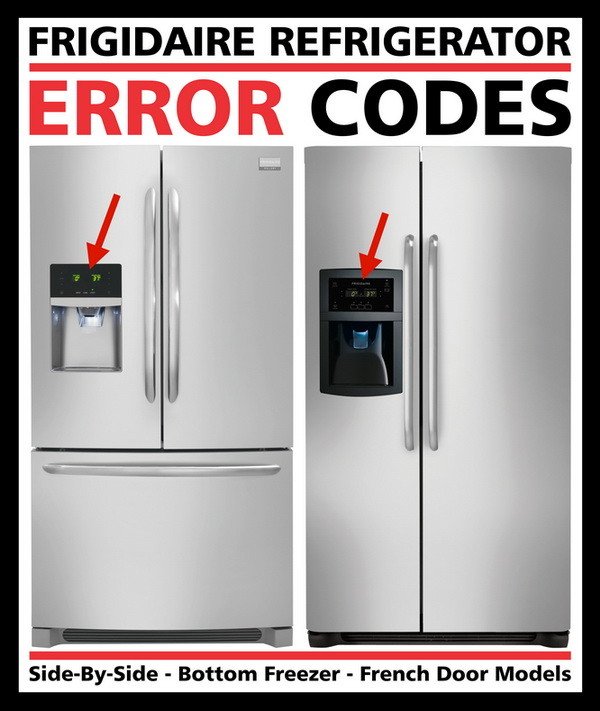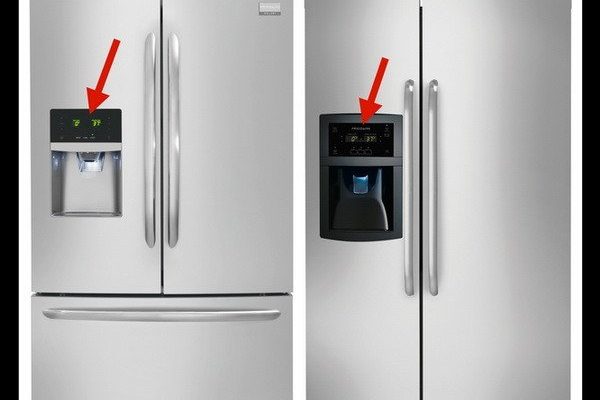
You might be wondering, “What is this E3 error anyway?” In simple terms, the E3 error is your refrigerator’s way of saying that something’s wrong with the defrost system. This could mean that your fridge isn’t defrosting properly, which might lead to a buildup of ice or frost. If left unchecked, this can interfere with your fridge’s ability to maintain the right temperature, which isn’t just inconvenient—it can spoil your food and increase your energy bills.
Understanding the E3 Error Code in Frigidaire Refrigerators
Let’s dive into what this E3 error code means. Imagine your refrigerator as a well-oiled machine that’s built to maintain the perfect atmosphere for your food, much like a climate-controlled room. When the E3 error pops up, it’s like a red flag telling you that the defrost system isn’t pulling its weight. Normally, the defrost system works to melt any frost that builds up on the freezer coils. This is essential because too much frost can impede airflow, making your fridge work harder and use more energy.
The E3 error often points to a malfunctioning defrost heater or defrost timer. Think of the defrost heater as a tiny heater in your freezer that melts any frost. If it stops working, it’s like the heater in your car not working on a cold day. The defrost timer, on the other hand, ensures that the heater turns on at the right time. Imagine if your alarm clock didn’t go off on time—your whole day could be thrown off schedule. Similarly, if the timer fails, your fridge’s defrost cycle might be out of sync.
If you don’t address this error, over time, your refrigerator will become less efficient. It might even lead to a cascade of other issues, like the compressor working overtime, which can shorten its lifespan. Repair costs can add up quickly if these problems aren’t nipped in the bud.
Consequences of Ignoring the E3 Error
Ignoring the E3 error isn’t just about the immediate inconvenience of frost build-up; it can lead to a series of unwanted consequences. Picture your fridge as a delicate ecosystem that thrives on balance. When the defrost system isn’t working properly, that balance is disrupted, and your fridge might struggle to keep your food at the ideal temperature. This means more spoilage, which is like throwing money directly into the trash bin.
Over time, the persistent strain on your fridge’s compressor and other components could lead to more serious failures. It’s a bit like ignoring the oil light in your car—eventually, you’ll face more than just a simple oil change. Your energy bills will also likely increase as the fridge tries harder to maintain the right temperature, much like running your air conditioner with the windows open.
Plus, your refrigerator might start to sound like it’s trying out for a rock concert with all the increased noise from overworking parts. This noise isn’t just annoying; it’s a telltale sign that your fridge needs attention before minor issues escalate into major repairs.
Steps to Address the E3 Error
Now, let’s tackle how to address this error. First, consider it a call to action. You’ll need to check your defrost heater and timer. If you’re handy, you might attempt a DIY fix by replacing these parts, but remember: safety first. Unplug your fridge before attempting any repairs—think of it as putting on gloves before handling hot pans.
If DIY isn’t your style or if the problem persists, it’s wise to call a professional. Refrigerator repairs can be complex, and a technician will have the right tools and experience to diagnose the issue accurately. This might seem like an extra expense now, but it’s an investment in extending the life of your fridge.
In the meantime, try to minimize opening the fridge doors unnecessarily to maintain the temperature. This simple act can help reduce the strain on your already stressed appliance. Consider it a temporary measure until you’ve resolved the issue completely.
Preventative Tips for a Healthy Refrigerator
So, how do you prevent this error from rearing its head again? Maintenance is key. Regularly cleaning your fridge can prevent frost buildup and help the defrost system work more efficiently. It’s like keeping your car clean—not just a matter of appearance, but functionality too.
Keep an eye on the temperature settings and adjust them if needed. Your fridge and freezer should be cold enough to keep food safe, but not so cold that frost becomes an issue. Regularly check the door seals to ensure they’re tight, as a loose seal can let warm air in, which can contribute to unnecessary frost.
Finally, schedule regular maintenance checks with a professional. Think of it as an annual check-up—catching small issues before they become big problems. By taking these steps, you can ensure that your refrigerator remains a reliable kitchen companion for years to come, keeping your groceries fresh and your kitchen running smoothly.
